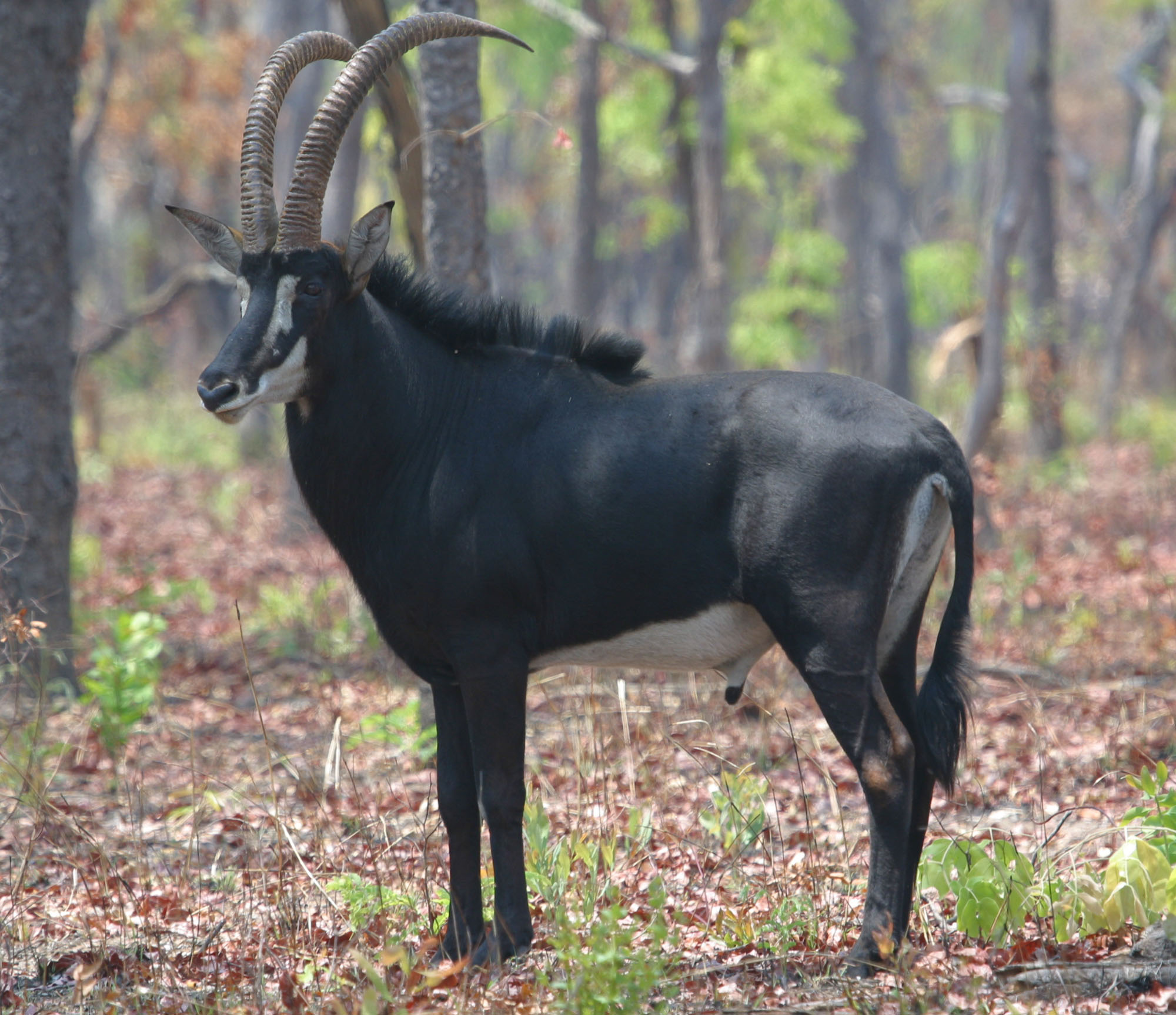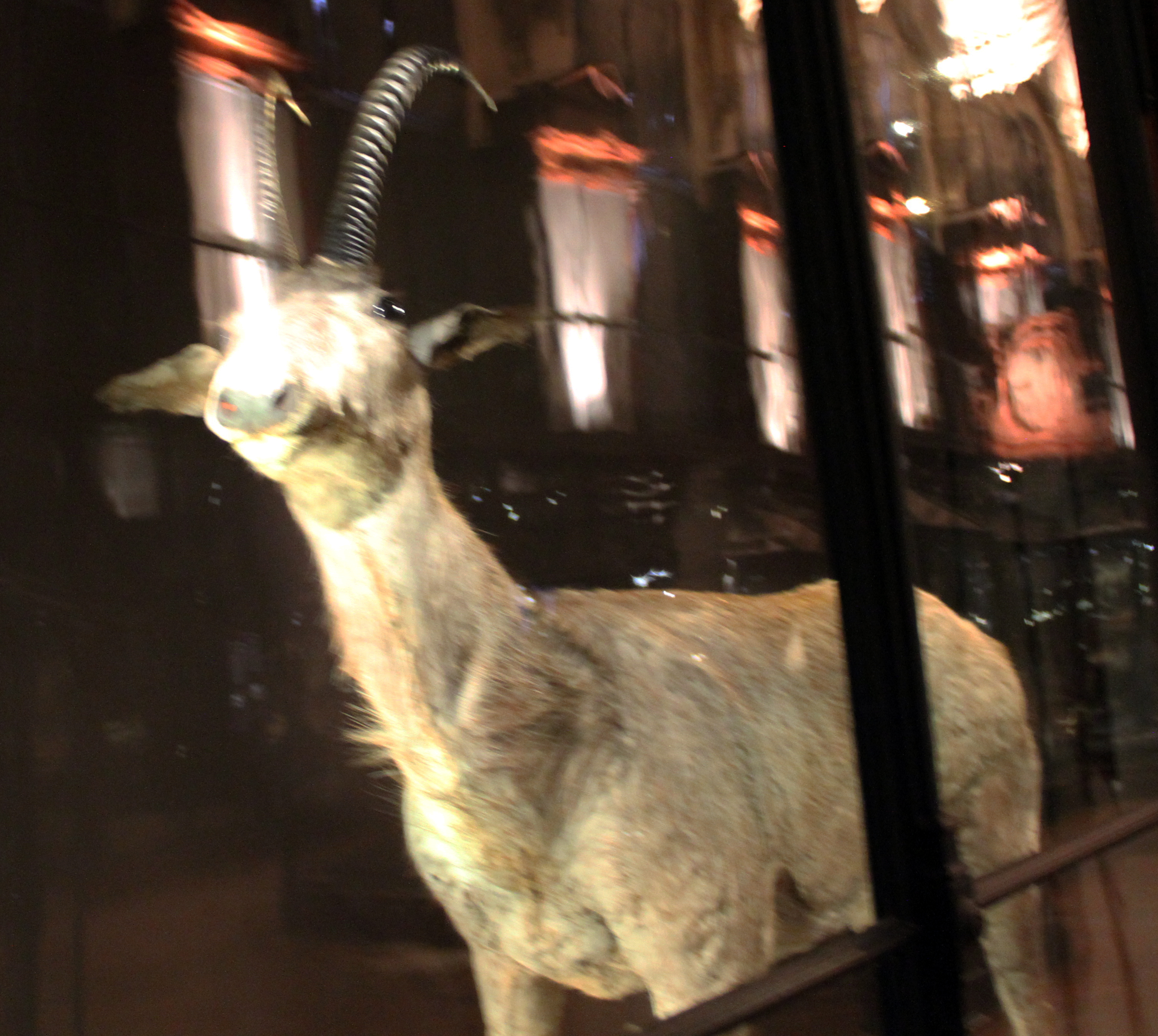|
Hippotragus
''Hippotragus'' is a genus of antelopes which includes two living and one recently extinct species, as well as some fossil relatives. The name comes from Greek ἵππος (''híppos''), "horse", and τράγος (''trágos''), "he-goat". Fossil species *†'' Hippotragus gigas'' *†'' Hippotragus cookei''? - may be a ''nomen dubium In binomial nomenclature, a ''nomen dubium'' (Latin for "doubtful name", plural ''nomina dubia'') is a scientific name that is of unknown or doubtful application. Zoology In case of a ''nomen dubium,'' it may be impossible to determine whether a ...'' References External links * Hippotraginae Mammal genera Taxa named by Thaddeus William Harris {{eventoedungulate-stub ... [...More Info...] [...Related Items...] OR: [Wikipedia] [Google] [Baidu] |
Bluebuck
The bluebuck (Afrikaans: bloubok ) or blue antelope (''Hippotragus leucophaeus'') is an extinct species of antelope that lived in South Africa until around 1800. It was smaller than the other two species in its genus ''Hippotragus,'' the roan antelope and sable antelope. The bluebuck was sometimes considered a subspecies of the roan antelope, but a genetic study has confirmed it as a distinct species. The largest mounted bluebuck specimen is tall at the withers. Its horns measure along the curve. The coat was a uniform bluish-grey, with a pale whitish belly. The forehead was brown, darker than the face. Its mane was not as developed as in the roan and sable antelopes; its ears were shorter and blunter, not tipped with black; and it had a darker tail tuft and smaller teeth. It also lacked the contrasting black and white patterns seen on the heads of its relatives. The bluebuck was a grazer, and may have calved where rainfall, and thus the availability of grasses, would peak. ... [...More Info...] [...Related Items...] OR: [Wikipedia] [Google] [Baidu] |
Sable Antelope
The sable antelope (''Hippotragus niger'') is a large antelope which inhabits wooded savanna in East and Southern Africa, from the south of Kenya to South Africa, with a separated population in Angola. Taxonomy The sable antelope shares the genus '' Hippotragus'' with the extinct bluebuck (''H. leucophaeus'') and the roan antelope (''H. equinus''), and is a member of the family Bovidae. In 1996, an analysis of mitochondrial DNA extracted from a mounted specimen of the bluebuck showed that it is outside the clade containing the roan and sable antelopes. The cladogram below shows the position of the sable antelope among its relatives, following the 1996 analysis: Subspecies ''Hipotragus niger'' has four subspecies: * The southern sable antelope (''H. n. niger''; also known as the common sable antelope, black sable antelope, Matsetsi sable antelope or South Zambian sable antelope) is regarded as the Subspecies#Nominotypical subspecies and subspecies autonyms, nominate subspec ... [...More Info...] [...Related Items...] OR: [Wikipedia] [Google] [Baidu] |
Hippotragus Cookei
''Hippotragus'' is a genus of antelopes which includes two living and one recently extinct species, as well as some fossil relatives. The name comes from Greek ἵππος (''híppos''), "horse", and τράγος (''trágos''), "he-goat". Fossil species *†''Hippotragus gigas'' *†'' Hippotragus cookei''? - may be a ''nomen dubium In binomial nomenclature, a ''nomen dubium'' (Latin for "doubtful name", plural ''nomina dubia'') is a scientific name that is of unknown or doubtful application. Zoology In case of a ''nomen dubium,'' it may be impossible to determine whether a ...'' References External links * Hippotraginae Mammal genera Taxa named by Thaddeus William Harris {{eventoedungulate-stub ... [...More Info...] [...Related Items...] OR: [Wikipedia] [Google] [Baidu] |
Roan Antelope (Hippotragus Equinus Equinus) Male
The roan antelope (''Hippotragus equinus'') is a large, savanna-dwelling antelope found in Western, Southern, and parts of Central and Eastern Africa. Named for its roan colour (a slightly reddish, sandy-brown), it has a lighter-toned underbelly and a (mostly) white face and snout, but with a black "mask" around the eyes and on the bridge of the snout, being somewhat lighter in females. Additionally, a pair of formidable, recurved horns (made of keratin-covered bone) are present on the heads of both males and females, albeit larger on the males, growing up to 100 cm (39 in) long. Males and females have short, erect, mohawk-like manes running down their back and very light, shaggy neckbeards, both of which are more pronounced in males. Both mane and neckbeard are tinted with darker tips, which run the length of the animal's back and belly, ending in a dark-coloured tail. The ears are long, erect, and donkey-like. The roan is among the world's largest antelopes, after the ela ... [...More Info...] [...Related Items...] OR: [Wikipedia] [Google] [Baidu] |
Hippotraginae
A grazing antelope is any of the species of antelope that make up the subfamily Hippotraginae or tribe Hippotragini of the family Bovidae The Bovidae comprise the family (biology), biological family of cloven-hoofed, ruminant mammals that includes Bos, cattle, bison, Bubalina, buffalo, antelopes (including Caprinae, goat-antelopes), Ovis, sheep and Capra (genus), goats. A member o .... They are grazers, rather than browsers. Their name comes from Greek ἵππος (híppos), "horse", and τράγος (trágos), "he-goat". They have slightly horse-like characteristics of body size and proportions: long legs and a solid body with a relatively thick muscular neck. Genera * Subfamily Hippotraginae References {{Taxonbar, from1=Q725271, from2=Q111975114 * Taxa named by Victor Brooke ... [...More Info...] [...Related Items...] OR: [Wikipedia] [Google] [Baidu] |
Hippotragus Gigas
''Hippotragus gigas'' is an extinct species of antelope known from the Plio-Pleistocene of Africa. Taxonomy ''Hippotragus gigas'' was discovered by Louis Leakey in 1965, who described it as "a '' Hippotragus'' of gigantic proportions". Fossils were first found in Bed II of the Olduvai Gorge in eastern Africa, and have also been found at sites in Algeria and South Africa South Africa, officially the Republic of South Africa (RSA), is the Southern Africa, southernmost country in Africa. Its Provinces of South Africa, nine provinces are bounded to the south by of coastline that stretches along the Atlantic O .... Description Based on molar size, this species was slightly larger than its living relatives and would have weighed around . In addition to larger size, the molars can be distinguished by their rounded cusps, large basal pillars, rounded ribs and the large goat folds on lower molars. Its horn cores were also less mediolaterally compressed than its relatives. ''H. g ... [...More Info...] [...Related Items...] OR: [Wikipedia] [Google] [Baidu] |
Mammal Genera
There are currently 1,258 genera, 161 families, 27 orders, and around 5,937 recognized living species of mammal. Mammalian taxonomy is in constant flux as many new species are described and recategorized within their respective genera and families. The taxonomy represented here is a compilation of the most logical and up-to-date information on mammalian taxonomy from many sources, the main ones being '' Handbook of the Mammals of the World'' series and '' Mammal Species of the World''. Afrosoricida Suborder Tenrecomorpha *Family Tenrecidae – tenrecs and otter shrews **Subfamily Geogalinae ***Genus '' Geogale'' – long-eared tenrec **Subfamily Oryzorictinae ***Genus '' Microgale'' – shrew tenrecs ***Genus '' Nesogale'' – shrew tenrecs ***Genus '' Oryzorictes'' – rice tenrecs **Subfamily Tenrecinae ***Genus '' Echinops'' – lesser hedgehog tenrec ***Genus '' Hemicentetes'' – streaked tenrec ***Genus '' Setifer'' – greater hedgehog tenrec ***Genus '' Tenrec'' – c ... [...More Info...] [...Related Items...] OR: [Wikipedia] [Google] [Baidu] |
Nomen Dubium
In binomial nomenclature, a ''nomen dubium'' (Latin for "doubtful name", plural ''nomina dubia'') is a scientific name that is of unknown or doubtful application. Zoology In case of a ''nomen dubium,'' it may be impossible to determine whether a specimen belongs to that group or not. This may happen if the original type series (i. e. holotype, isotype, syntype or paratype) is lost or destroyed. The zoological and botanical codes allow for a new type specimen, or neotype, to be chosen in this case. A name may also be considered a ''nomen dubium'' if its name-bearing type is fragmentary or lacking important diagnostic features (this is often the case for species known only as fossils). To preserve stability of names, the ''International Code of Zoological Nomenclature'' allows a new type specimen, or neotype, to be chosen for a ''nomen dubium'' in this case. 75.5. Replacement of unidentifiable name-bearing type by a neotype. When an author considers that the taxonomic identity ... [...More Info...] [...Related Items...] OR: [Wikipedia] [Google] [Baidu] |



